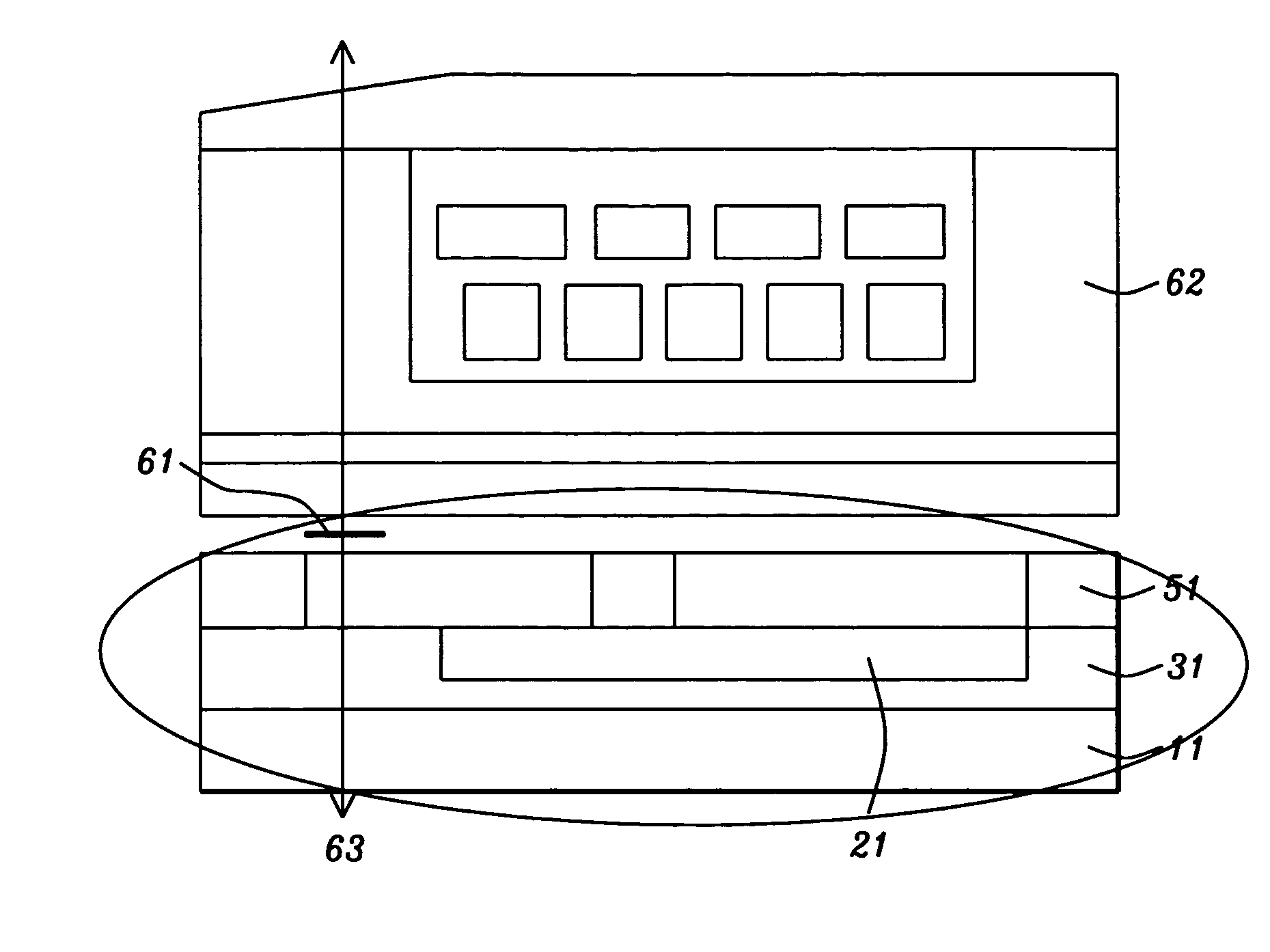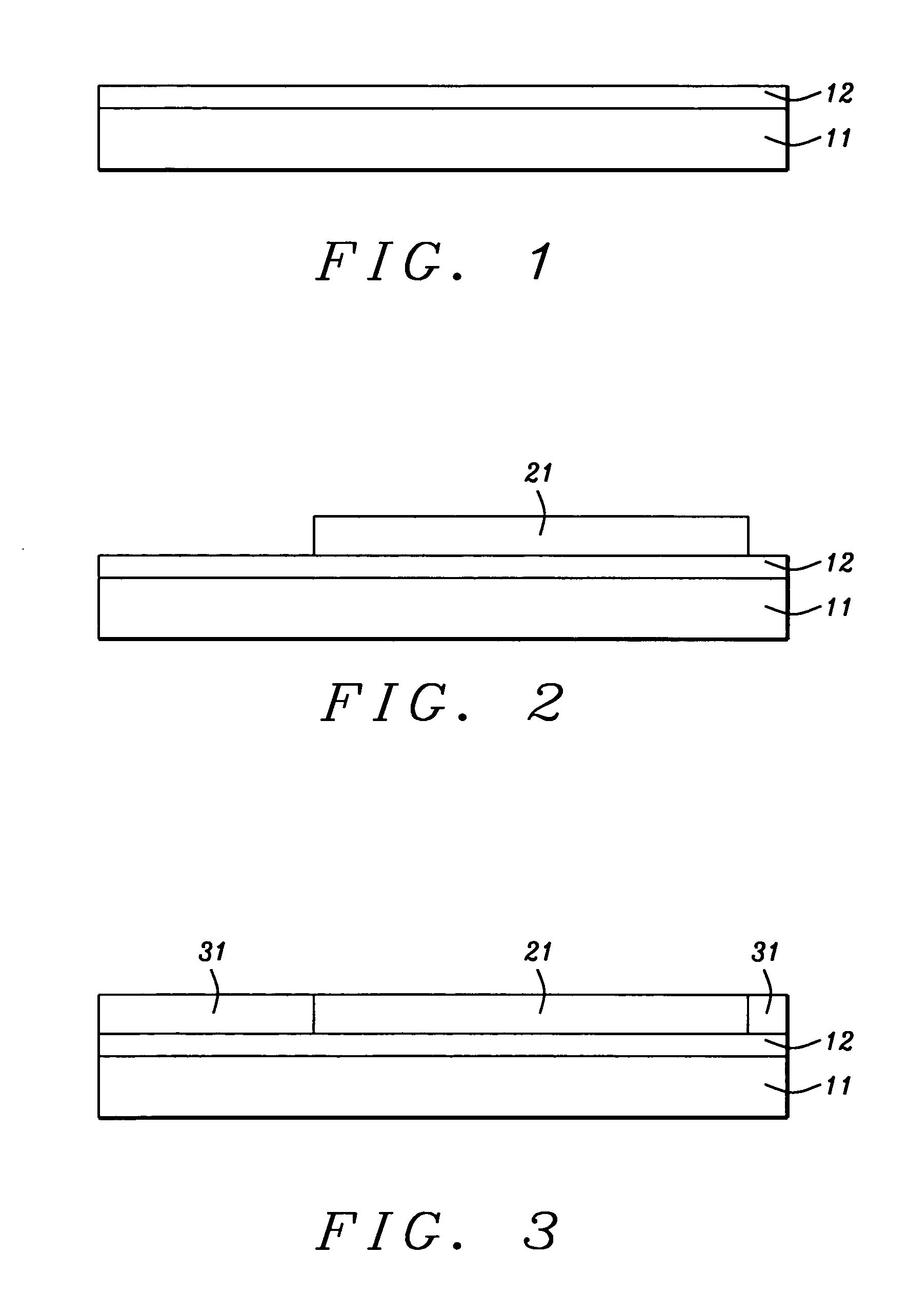Method to improve heat dissipation in a magnetic shield
a magnetic shield and heat dissipation technology, applied in the field of magnetic shields, can solve the problems of damage to read heads, and failure to meet the needs of magnetic shields, and achieve the effect of improving heat dissipation and less field disturban
- Summary
- Abstract
- Description
- Claims
- Application Information
AI Technical Summary
Benefits of technology
Problems solved by technology
Method used
Image
Examples
Embodiment Construction
[0015]The present invention teaches a novel method to make a two-piece bottom shield with both pieces sitting on top of a non-magnetic metal heat sink. The heat generate by the coil during writing is transferred to the non-magnetic metal heat sink and hence transfers to the substrate. With this approach, the head not only benefits from less field disturbance (due to the small shield) but also receives improved the heat dissipation from the additional heat sink.
[0016]We will disclose the invention through a description of the process for manufacturing a read-write head that includes the key novel features of the invention, namely the split shield underlaid by a heat sink. Said process description will also serve to make clear the structure of the present invention.
[0017]Referring now to FIG. 1, the process of the present invention begins with the provision of substrate 11 and then depositing thereon dielectric layer 12. Then layer of non-magnetic material 21, having a thermal conduct...
PUM
| Property | Measurement | Unit |
|---|---|---|
| thermal conductivity | aaaaa | aaaaa |
| thickness | aaaaa | aaaaa |
| thickness | aaaaa | aaaaa |
Abstract
Description
Claims
Application Information
 Login to View More
Login to View More - R&D
- Intellectual Property
- Life Sciences
- Materials
- Tech Scout
- Unparalleled Data Quality
- Higher Quality Content
- 60% Fewer Hallucinations
Browse by: Latest US Patents, China's latest patents, Technical Efficacy Thesaurus, Application Domain, Technology Topic, Popular Technical Reports.
© 2025 PatSnap. All rights reserved.Legal|Privacy policy|Modern Slavery Act Transparency Statement|Sitemap|About US| Contact US: help@patsnap.com



